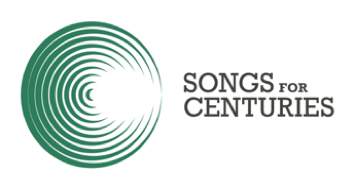What Is Product Placement?
Product placement is the practice of featuring a branded product or service inside content such as a music video, short film, livestream, or digital series — in a way that appears organic and non-intrusive.
It’s not a pop-up ad. It’s not a “sponsored by” banner.
Instead, it might be:
- A can of a specific drink seen in a studio shot
- A pair of branded sneakers worn in a dance video
- A tech device being used naturally during a livestream
- A clothing brand worn intentionally in a performance video
Product placement makes the brand part of the story. When done correctly, it becomes a seamless enhancement of the creative content — while also funding it.
Why Product Placement Is Thriving in 2025
In 2025, product placement is not just growing, it’s dominating the intersection of media, marketing, and monetization.
According to PQ Media (2024), global spending on product placement is projected to grow consistently through 2028. This includes double-digit annual growth specifically in digital content, music platforms, and short-form video.
This surge is driven by:
- Ad fatigue: Viewers now actively skip, mute, or block ads
- Authenticity matters: Consumers trust creators, not traditional commercials
- Streaming explosion: More platforms = more content = more placement opportunities
- Global reach: Product placement travels without translation
In other words: Brands need creators more than creators need brands. But only those prepared to structure the relationship will benefit.
Who Can Benefit from Product Placement?
You don’t need a million followers to attract brand attention.
Product placement is viable for:
Independent Music Artists
If you’re creating high-quality visuals, have a distinct voice, and an engaged community, you're already valuable to brands.
Audio Engineers & Music Producers
From the gear you use to the environment you work in, your process showcases real products. That visibility is monetizable.
Filmmakers & Content Creators
Your visual language — wardrobe, locations, props — is a canvas for creative product integration.
Managers, Label Reps, and Creative Teams
If you're building an artist’s brand, product placement is a strategic revenue stream that adds legitimacy and exposure.
Media Tech Experts & Metadata Engineers
As we enter the era of AI-enhanced media indexing, trackable product placement becomes critical — and a tech advantage.
How Product Placement Works (Behind the Scenes)
Here’s a simplified breakdown of how a typical product placement deal comes together:
Step 1: Creator Packages the Opportunity
You prepare a brand placement deck: who you are, what your content is about, where the brand will be seen, and what your audience looks like.
Step 2: The Brand Evaluates for Fit
The brand considers alignment: tone, values, aesthetic, and target demographics
Step 3: You Negotiate Terms
This includes placement type, timing, exclusivity, usage rights, and deliverables. It's often easier to start with fixed-fee micro-deals.
Step 4: Execution & Reporting
You produce the content, document the placement, and sometimes track performance via views, shares, comments, or impressions.
What Brands Look for in a Placement Deal
If you want to work with brands, you need to speak their language. Brands evaluate placements based on:
- Audience: Are you reaching their ideal customer?
- Consistency: Is your style trustworthy and aligned with their image?
- Reach & Engagement: Numbers matter — but so does community quality
- Clarity: Are you able to clearly describe where, how, and why they’ll appear?
- Exclusivity: Are you featuring competing products?
Having a clean presentation — or even just a structured checklist — gives you a major edge.

Real Examples: Product Placement in Music, Media & Culture
Product placement has been around for decades, but here’s how it looks for today’s creators:
- In a music video: A luxury clothing brand is worn throughout, with a soft logo reveal mid-video
- In a producer tutorial: A DAW plugin is referenced visually during screen share
- In a mini-doc: A location sponsor provides a warehouse or rooftop in exchange for mention in credits
- In lyrics: A product is referenced subtly in the hook or verse
- In Instagram Reels: A beverage or energy product is casually shown on the artist’s desk
These placements are often low-cost for the brand — and high-impact for you.
How to Get Started: Tools for Creators
You don’t need to guess your way through this. We’ve created tools specifically for artists, managers, and producers ready to monetize through product placement.
Brand Readiness Checklist (FREE)
Quickly evaluate whether your content is ready for brand collaboration — and identify next steps if it's not
Product Placement Playbook
This eBook includes templates, pricing strategies, brand outreach guidance, and case study examples. Ideal for those ready to treat content like a business.
Visit ProductPlacement.Marketing
For ongoing tools, industry insights, and advanced placement opportunities.
Final Thoughts: It’s Time to Monetize Like a Pro
If you’re already creating, filming, producing, or editing — you’re already doing 90% of the work.
Now it’s about being intentional.
Product placement isn't just extra money — it’s long-term leverage. It positions you as a serious creator, adds value to your work, and gives brands a reason to support your vision.
The question is not “Should I do this?”
It’s “How much value am I leaving on the table by not starting now?”
Ready to start?
- ✅ Download the Free Checklist
- ✅ Get the Product Placement Playbook
- ✅ Visit Product Placement Marketing


